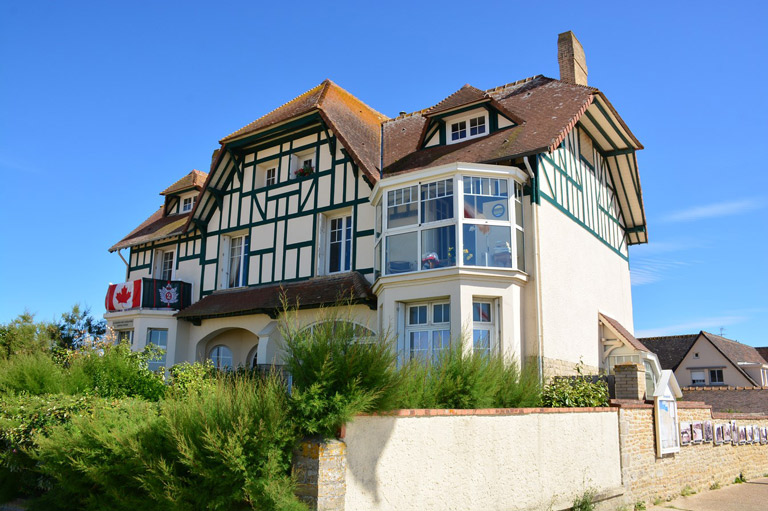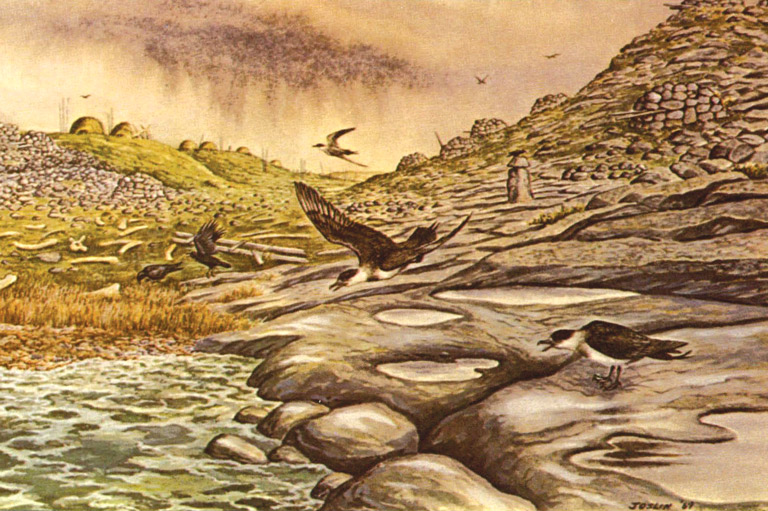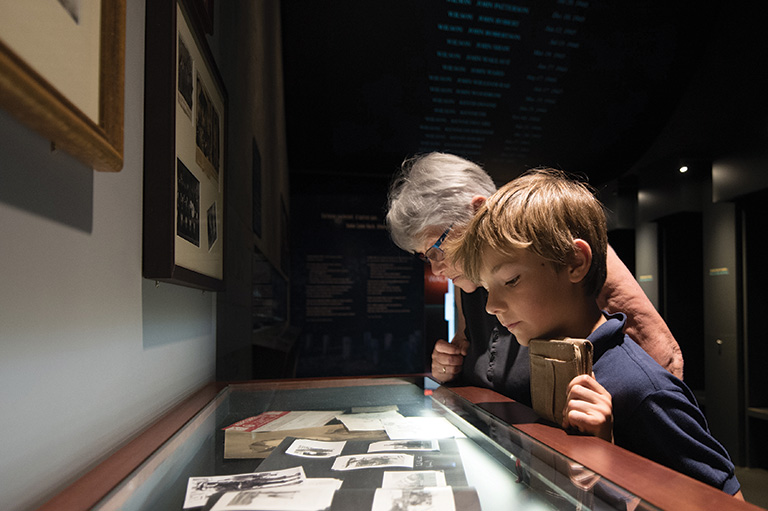Against the Grain
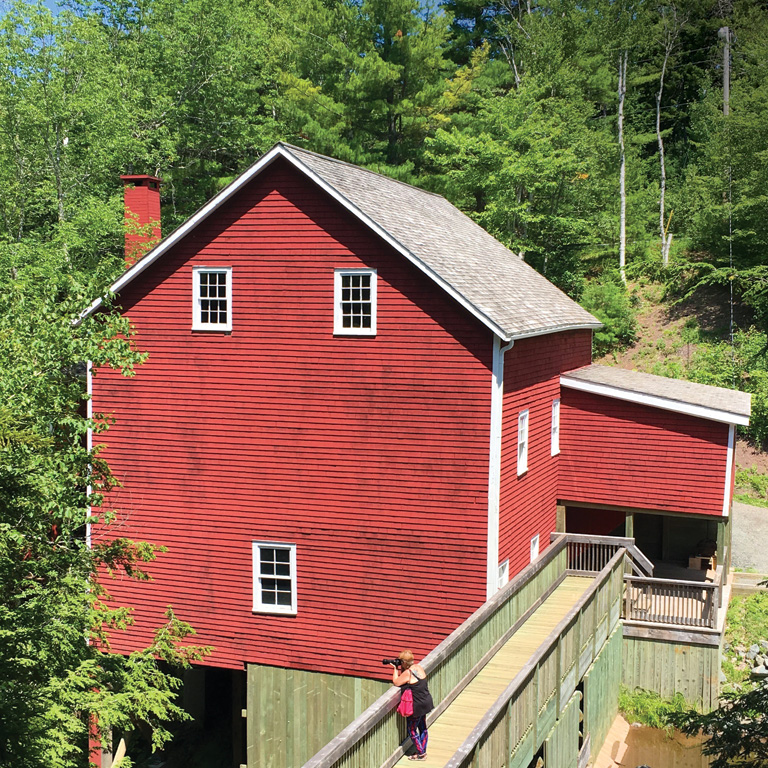
It was about thirty minutes into what should have been a ten-minute drive when I began to worry that we were indeed lost. Rumbling down a country road near Tatamagouche, Nova Scotia, I searched desperately for a sign — a literal road sign, or even a heavenly sign — that we were getting close to our goal, the Balmoral Grist Mill.
No matter what, though, I wasn’t going to let on that we were approaching terra incognita. I knew the golden rule of vacationing in rural Nova Scotia: that you’re always just one quick conversation — and course correction — away from getting back on track.
And so, with the world’s most patient passengers (my mom and my daughter) waiting in the car, I pulled into the next driveway I saw and then scampered across the lawn to ask a local for directions.
After a brief chat about the weather (nice and sunny) and the state of the roads (passable, but getting worse) the gentleman assured me that we were only moments away from our destination.
At this point, I’m sure my plan to visit a historic grist mill seemed half-baked. After all, Nova Scotia’s north shore boasts some of the most beautiful scenery in the province, including red sand beaches that stretch for miles and coastal villages where you can order up lobster sandwiches and seafood chowder to die for.
We could have spent the day splashing in the warm waters of the Northumberland Strait. But it was the grist mill or bust for me.
I had visited the mill once before, during an elementary school field trip more than three decades ago, and that trip had left a lasting impression on me.
Finally, after a couple more zigs and zags, we pulled into the grist mill’s gravel parking lot. A sloping path wended its way through a copse of trees to a small dam that did double duty as a footbridge leading to the red wooden mill beyond.
The Balmoral Grist Mill was built by Alexander McKay, the son of miller John McKay, a Scottish immigrant who settled in the Cape Breton region of the province in the early 1800s. Milling clearly ran in the family — four of John McKay’s seven sons eventually joined the grinding business.
Alexander McKay bought the land for the Balmoral mill for just twelve dollars. At the time, there were more than 450 small grist mills operating in the province. McKay’s mill employed a water turbine, which was a relatively new technology in the 1870s. Water turbines employed sluice gates to start and to stop the flow of water from rivers or streams. The cascading water turned the turbine, which powered the grindstones inside the mill that in turn ground various grains into flour.
The Balmoral Grist Mill employs four large grindstones, all carefully carved to ensure the efficiency of the grinding process. The grindstones are cut in spoke patterns that push the grains from the centre towards the outer edges, where the fine grinding takes place. Next, the miller sifts the flour to remove the chaff and then bags it for future sale.
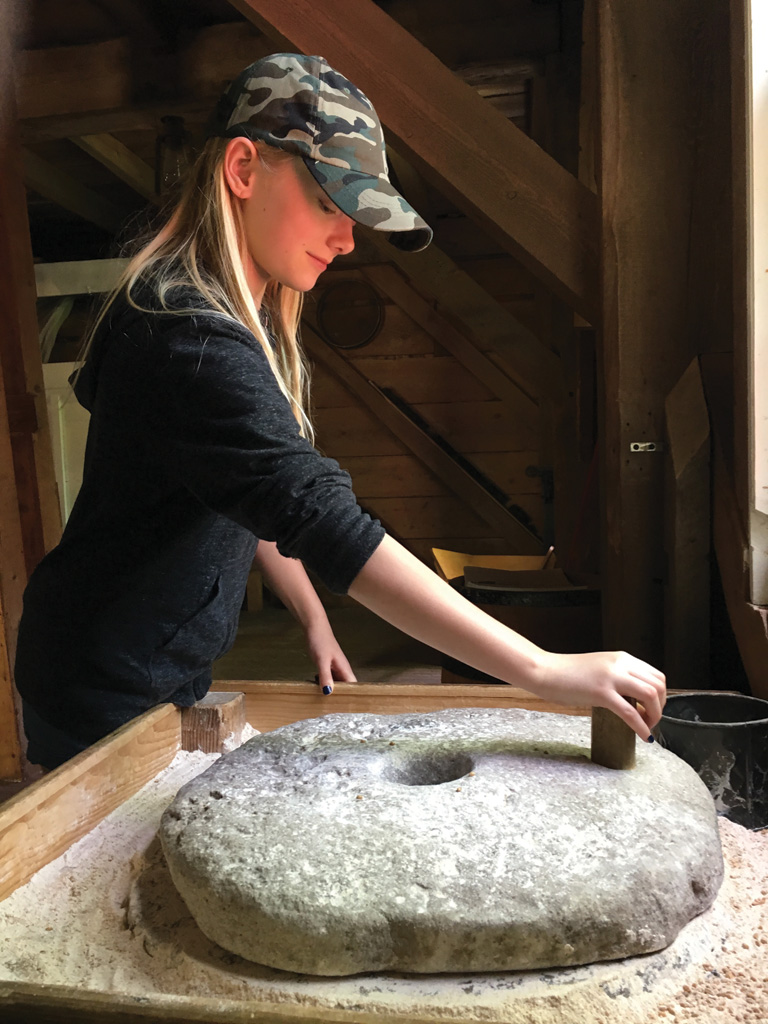
The Balmoral mill processes several varieties of grains, including wheat, oats, barley, rye, and buckwheat. It also features a kiln that dries the oats in preparation for grinding.
The mill changed hands several times over the decades. When Alexander McKay died in 1886, the mill was left to his youngest son, Hugh. Hugh McKay ran the mill for nearly twenty years before selling it to a farmer named Alexander McLean MacDonald.
MacDonald ran the mill until 1940 and then passed it on to his son Archie. A decade later, Archie was forced to close the mill due to competition from larger, more modern mills.
In 1964, the Sunrise Trail Museum in Tatamagouche began restoring the gristmill and hired Archie MacDonald to run it. However, limited by budget and resources, the museum was sold in 1966 to the Nova Scotia government. The province soon launched an extensive restoration program, installing an electric motor to drive the mill’s stones, and rebuilding its dam.
Today the Balmoral Grist Mill is part of Nova Scotia’s museum system and welcomes visitors seasonally between June and October.
After an enjoyable tour of the mill’s interior, we headed outside to a small picnic area located just upstream. Set in a beautiful wooded glade and equipped with a picnic table, the site was serene. As my daughter looked for signs of brook trout in a nearby pool, the only sounds were the occasional chirps of birds and the babbling of the stream as it tumbled its way to the dam below.
As we relaxed there, I reflected on the ingenuity of the nineteenth-century engineering on display at the mill. Featuring four sets of grindstones, powered by water and connected by a tangle of whirring leather belts, the entire operation was designed, incredibly, to be run by a single miller.
Eventually, it was time to return to my parents’ home near Pugwash, Nova Scotia. En route, we decided to stop off in Tatamagouche for a bite. While there, we couldn’t resist the chance to ride on the “Tata-nooga Choo Choo” — a motorized twenty-eight-seat “road train” that offers tours of the town’s main attractions, including a historic train station and a former creamery.
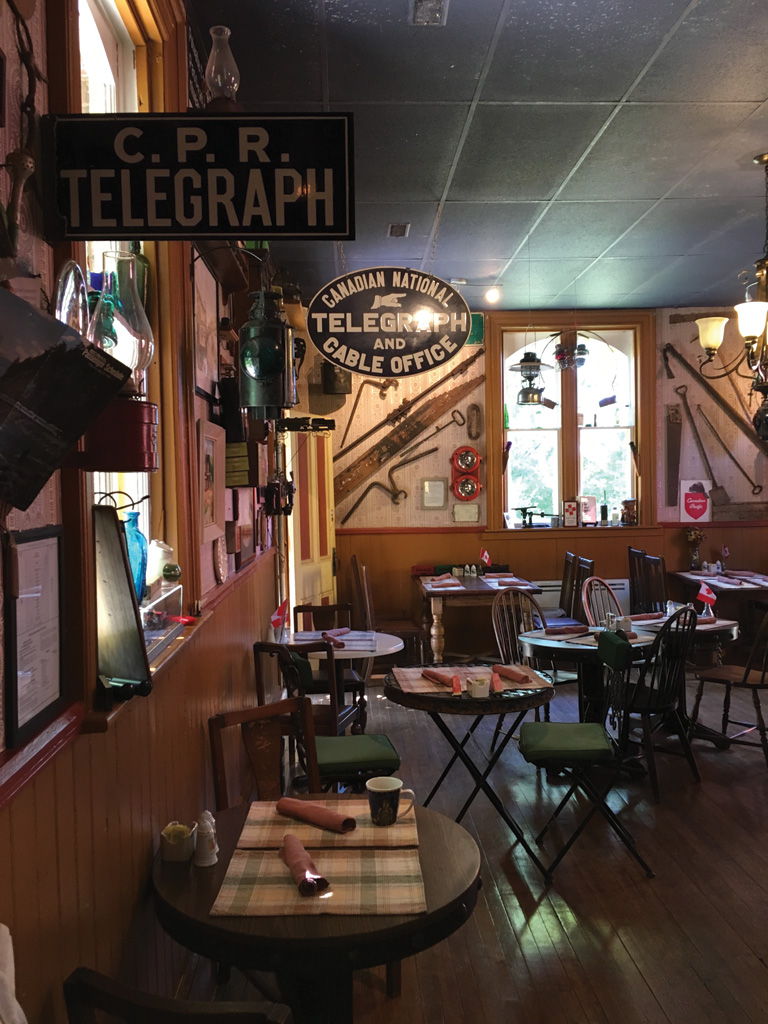
The train station was of particular interest because it has been transformed into an inn. Built in 1887, the station offered passenger service until 1960 and once hosted a Governor General of Canada, Lord Aberdeen.
In the 1980s, the station was restored by local train enthusiast and businessman James LeFresne. Over the years, LeFresne has purchased at least nine cabooses and boxcars and transformed them into sleeping units for guests of his Train Station Inn.
Visitors can also rent the Station Master’s Suite, located in the station itself, which includes three bedrooms, each equipped with private bathrooms.
As we strolled around Tatamagouche, I was struck by how much the town has to offer tourists. When I was a kid, I used to accompany my granny to Tatamagouche for her hair appointments. It was a thrill for me, because the local drugstore was the only place near Pugwash that sold comic books. Other than a few service stores and a gas station, Tatamagouche was a pretty sleepy town. But not now. The main drag is bursting with restaurants and tourist shops; a highlight is the Tatamagouche Brewing Company, a family-owned organic microbrewery that offers “Tatamagoodness” in every pint they sell.
The village is also just a few kilometres away from several warm saltwater beaches. I’d recommend Blue Sea Beach Provincial Park in nearby Malagash. The wide, sandy beach is perfect for building sandcastles, while the swimming is excellent in what are billed as the “warmest waters north of the Carolinas.”
In the end, my half-baked plan to visit the Balmoral Grist Mill left us eager to return the next time I’m home for a visit.
Themes associated with this article
Advertisement
You might also like...
Help support history teachers across Canada!
By donating your unused Aeroplan points to Canada’s History Society, you help us provide teachers with crucial resources by offsetting the cost of running our education and awards programs.


